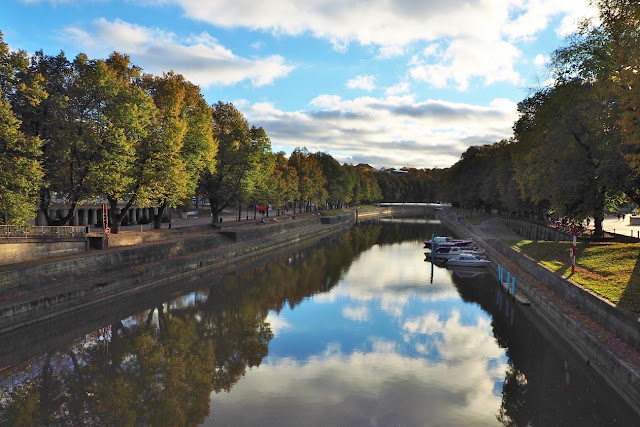Before going into Italy, there is
something I’ve been meaning to post about since the September weekend I spent with my
children in Oslo (more about that here). I’m afraid I can’t
help myself but must ‘air’ a little story on the extraordinary sight we walked
to see in the vast Frogner Park northwest of the city centre.
This is the Vigeland Sculpture Arrangement,
also called the Vigeland park, the largest sculpture park in the world with works
designed by a single artist, that is the Norwegian sculptor Gustav
Vigeland (1869-1943).
When you enter the park through
the main gates a boulevard will open up...
taking you across a sculpture-decorated
bridge...
to a square with a fountain surrounded by a rose garden...
and further up to
the so-called Monolith plateau with an obelisk-like sculpture in the middle.
The installation includes a total
of 212 works in stone, bronze and cast iron. Vigeland devoted the last two decades
of his life to this project. He personally modelled each sculpture in full size
in clay supervising the carving and casting done by professional craftsmen.
He also designed the
architectural layout of the whole Frogner Park. His studio and home were in the
southern corner of the park in a building the city of Oslo provided for him in
exchange of his leaving his sculptures to the state. The building now houses
the Vigeland Museum.
It is a puzzling experience to
walk in the middle of the sculpture arrangement: past the cheerful bronze figures on the
bridge, around the fanciful fountain up to the intriguing Monolith platform. I must
admit I couldn’t quite figure out the symbolism behind the piles of babies nor
that of the Monolith portraying 121 human figures reaching towards the sky.
The Monolith is said to portray
the human yearning for the spiritual and divine. I found it rather saddening, however, as my vision of the journey towards the possible afterlife is more bright. It is carved out of a single block of granite and measures more
than 14 meters with an additional three meters of base. It took three professionals
13 years to carve the Monolith according to a plaster design cast from Vigeland’s model in
clay.
Most of the sculpture arrangement
was completed between 1939 and 1949. This fascinating place remains one of the
most popular sights in Norway. Definitely worth a visit and amazing to look at any time of the year.



































